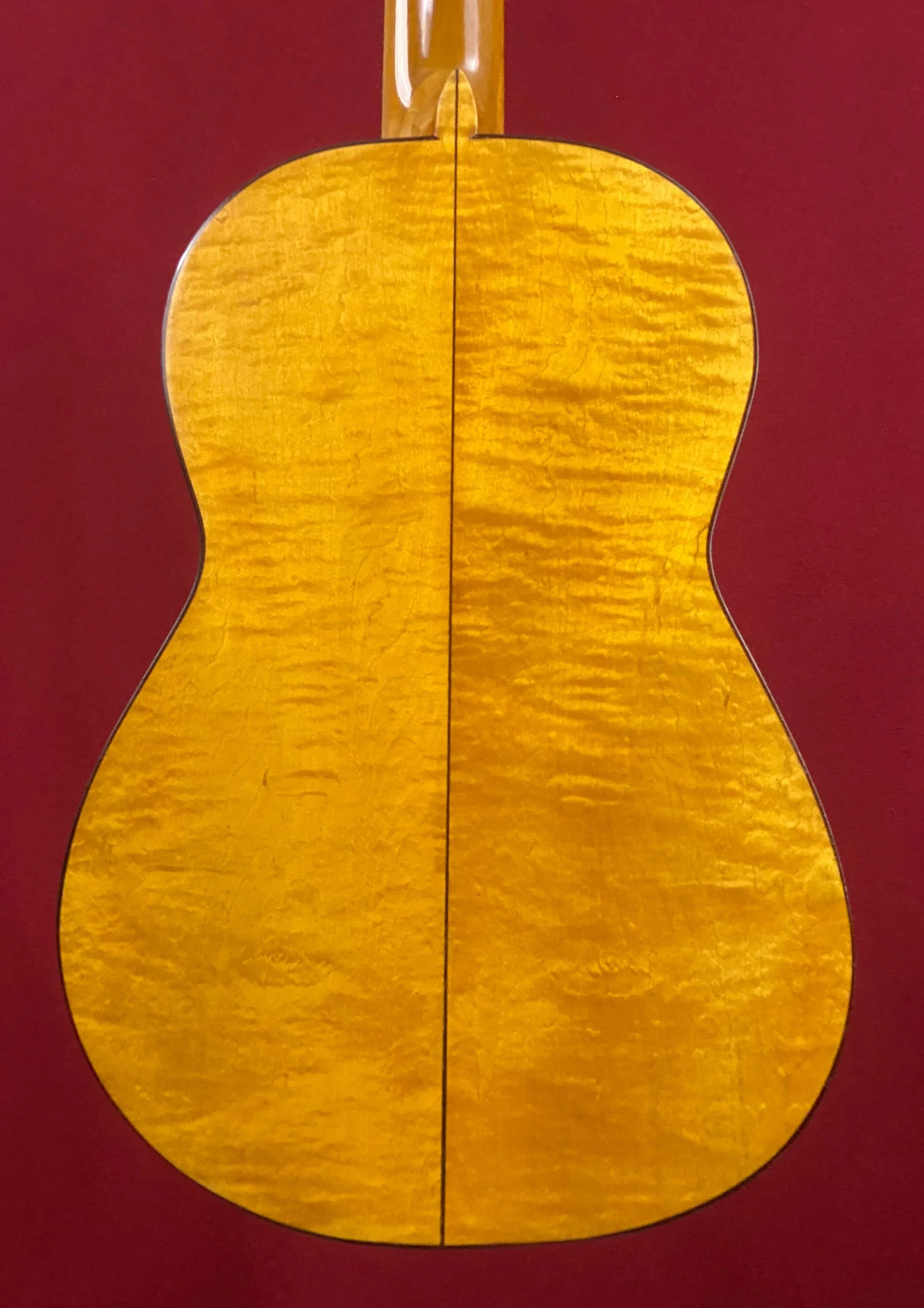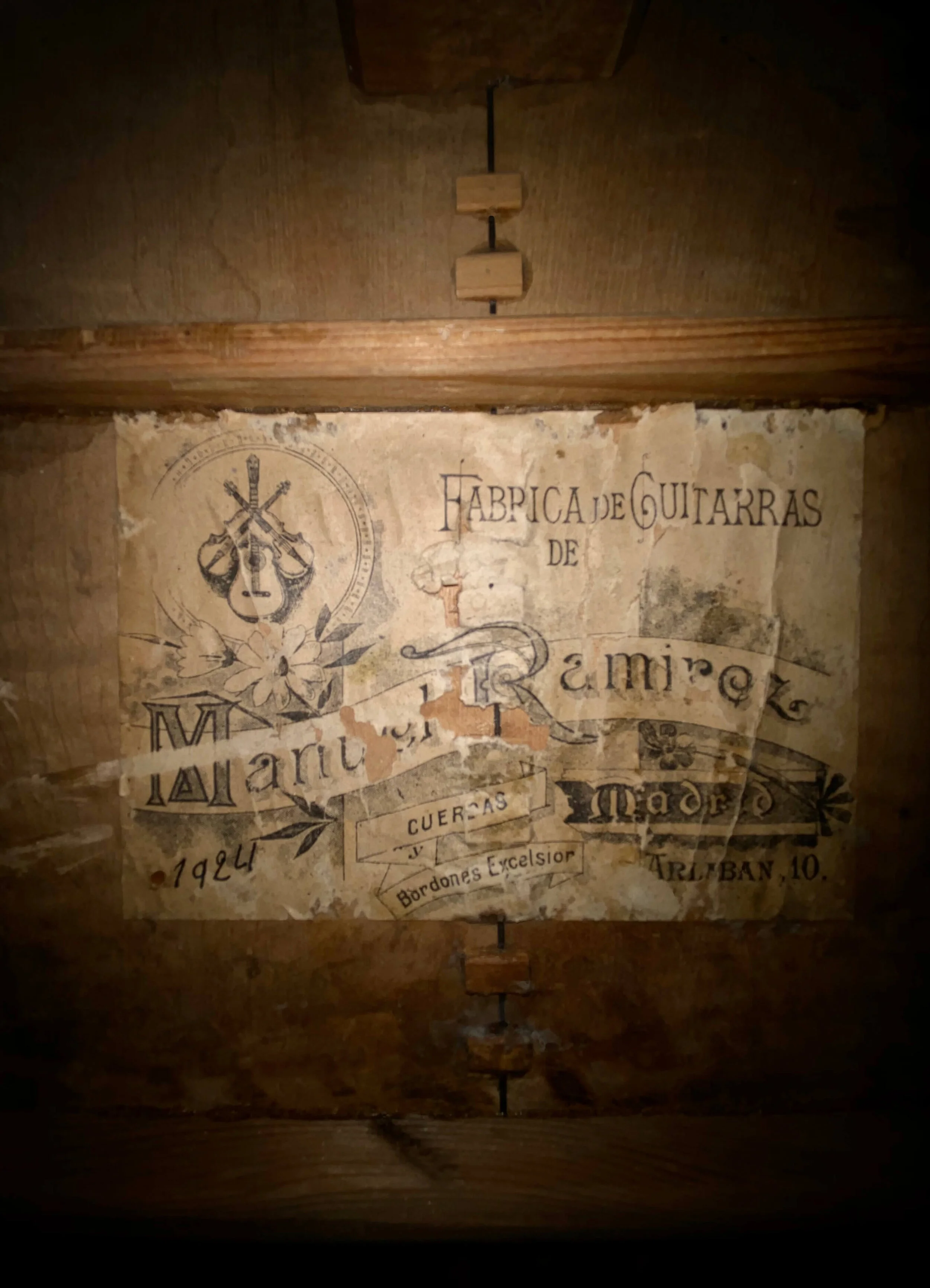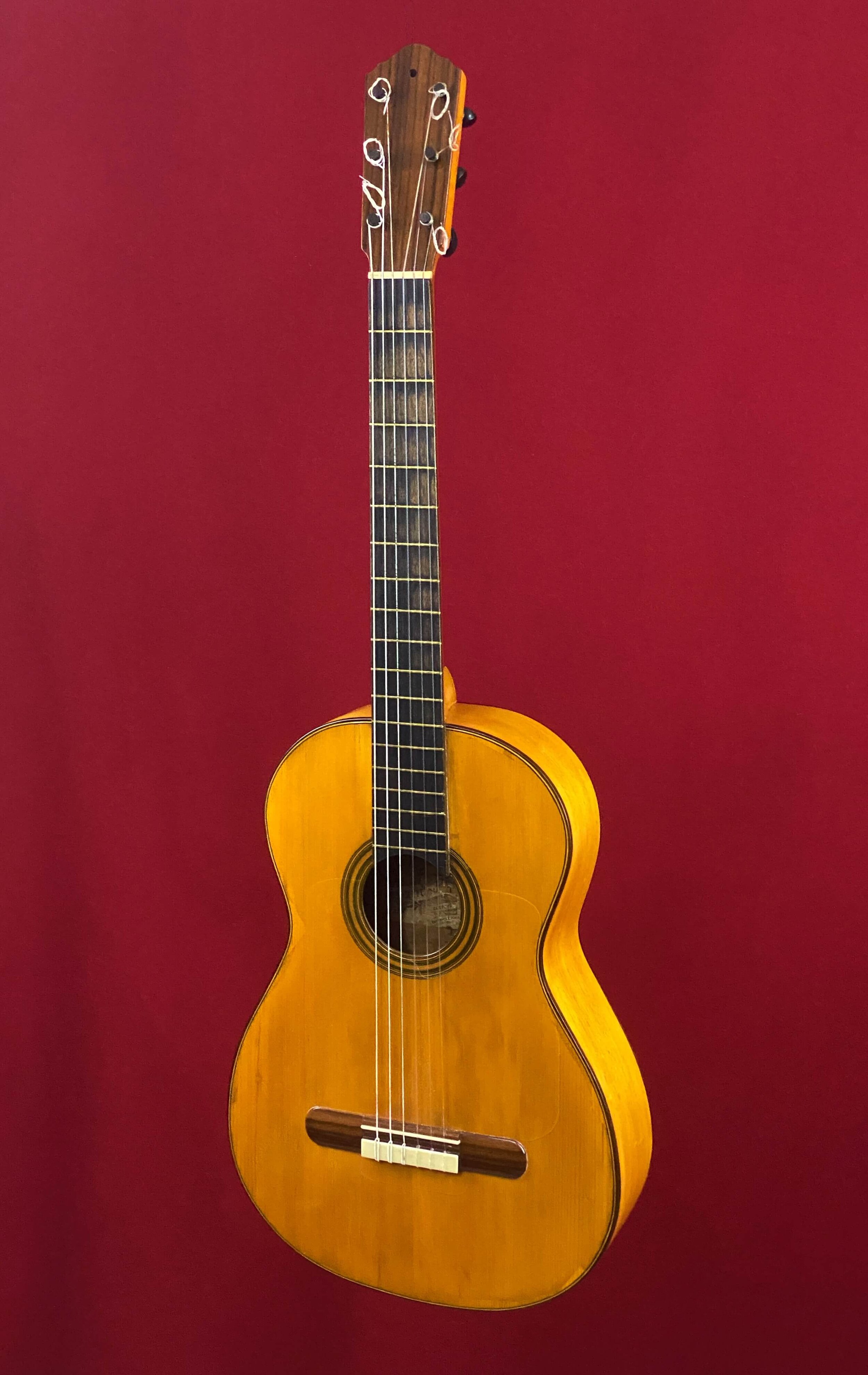c. 1906 Manuel Ramirez, maple flamenco guitar
c. 1906 Manuel Ramirez, maple flamenco guitar
Make: Manuel Ramirez
Model: Maple flamenco guitar
Model Year: c.1906
Top: German Spruce
Back & Sides: European maple
Scale: 635mm
Nut: 50mm
Finish: French polish
Tuners: Ebony Pegs
Country: Spain
Condition: Used - Excellent
Location: Tucson
Manuel Ramirez is remembered for his generous gesture of gifting a splendid guitar to a young Andrés Segovia in 1912, an instrument that accompanied Segovia throughout the initial twenty-five years of his illustrious career. Born in Alhama de Aragón in the province of Zaragoza in 1864, Manuel was the son of a master carpenter who worked for a developer in Madrid's Salamanca district. He acquired the art of guitar making under the guidance of his brother José, who had apprenticed with Francisco Gonzalez.
Around 1890, Manuel decided to embark on his own path. Initially considering emigration to Paris, a path taken by Julian Gomez Ramirez (no relation) under José's tutelage, he opened a workshop on the Plaza de Santa Ana instead. This decision deeply strained his relationship with his brother José, and they never reconciled. As business was slow, Manuel, known for his somewhat restless Bohemian character, also dabbled in other professions, such as working as an electrician for the Madrid Electric Company, often leaving his shop in the capable hands of his disciple, Enrique Garcia.
In 1897, Manuel relocated his shop to Calle Arlabán, No. 10, where he remained until 1912, when he moved to No. 11. Manuel, who was skilled in crafting violins as well, earned the esteemed title of Official Luthier of the Royal Conservatory of Madrid. He also achieved recognition by winning a medal at the 1893 Chicago Fair for his exceptional craftsmanship.
Manuel Ramirez played a pivotal role in training a generation of talented luthiers, including Enrique Garcia, Santos Hernandez, Modesto Borreguero, and Domingo Esteso. Tragically, Manuel Ramirez passed away in 1916, and his widow took over the management of his shop. Santos Hernandez, Domingo Esteso, and Modesto Borreguero remained loyal to Manuel's legacy and continued to work for his widow for a period. She, however, passed away in 1921.
This particular guitar bears a label that Manuel Ramirez used between 1903 and 1909, allowing us to comfortably date it to around 1906. Notably, Ramirez did not include specific dates on these labels. The number 1924 seen on the label is certainly not a date, but could be a model number. I discovered this guitar in Seville and commissioned Andres Dominguez Guerrero, a master luthier, to undertake its restoration. I am thoroughly pleased with the results and take pride in playing a role in granting this remarkable-sounding guitar a second life.











